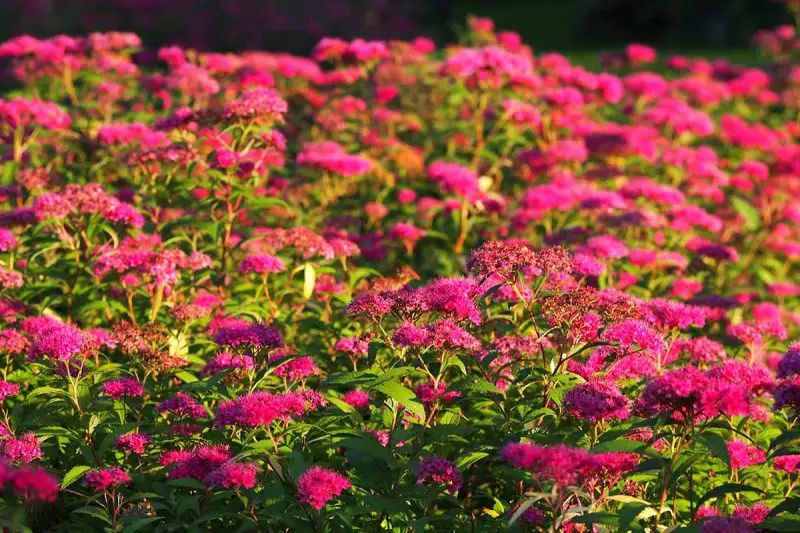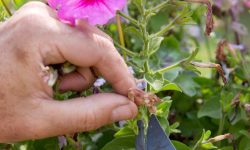Spirea is a stunning, versatile shrub prized for its vibrant blooms and graceful shape. Its colorful flowers brighten gardens, borders, and landscapes, making it a favorite for gardeners seeking beauty with minimal effort. Proper care ensures healthy growth, abundant flowering, and long-lasting appeal throughout the seasons.
Caring for spirea involves more than basic watering and pruning. Seasonal maintenance, including fertilization, mulching, and pest monitoring, helps the shrub thrive. Understanding its specific needs allows gardeners to maximize blooms and maintain a resilient, attractive plant. By following expert guidance, spirea can flourish in various climates, support pollinators, and enhance any garden space with its charming, eye-catching presence.
Understanding Spirea and Their Growth Requirements

Spirea is a hardy, low-maintenance shrub known for its arching branches and vibrant clusters of flowers. Understanding its growth requirements is essential to ensure healthy development and consistent blooms. Most spirea varieties thrive in full sun, which promotes strong stems and abundant flowering. While they tolerate partial shade, too little sunlight can reduce bloom production and weaken the plant. Soil quality also plays a key role. Well-drained, fertile soil encourages vigorous growth, while compacted or waterlogged soil may stunt development and increase susceptibility to disease. Regular observation of the shrub’s growth patterns helps gardeners identify potential problems early and make adjustments.
Watering is another crucial factor in spirea care. Young plants require consistent moisture to establish a robust root system, while mature shrubs are more drought-tolerant. Overwatering can lead to root rot, whereas underwatering may stress the plant and reduce flowering. Mulching around the base helps maintain soil moisture, moderate temperature, and suppress weeds, creating an optimal environment for healthy growth. Fertilization supports strong stems and vibrant blooms, with a balanced fertilizer applied in early spring giving the shrub a boost before the flowering season.
Spirea also benefits from seasonal maintenance tailored to its specific needs. Monitoring for pests, trimming dead or damaged branches, and ensuring proper spacing for air circulation reduce stress and support overall plant health. By understanding the sunlight, soil, water, and nutrient requirements, gardeners can provide optimal conditions for spirea. This knowledge ensures a vigorous, resilient shrub that produces abundant flowers and enhances garden aesthetics year after year.
When to Plant Spirea
Timing is crucial when planting spirea to ensure strong establishment and vibrant growth. The ideal period depends on your climate and local weather conditions. In most regions, early spring or early fall is best, allowing the shrub to establish roots before extreme temperatures arrive. Planting during these periods gives spirea sufficient time to acclimate and develop a robust root system, which supports healthy stems and abundant blooms in the first growing season.
Planting at the right time also reduces stress and helps the shrub resist pests and diseases. Spring planting ensures the shrub has an entire growing season to grow before winter, while fall planting allows roots to develop without the strain of producing new foliage. Avoid planting during extreme heat or frost periods, as young spirea may struggle to establish and suffer from water loss or frost damage. Choosing the correct timing maximizes survival and growth potential.
Regional climate variations should guide your planting schedule. In colder zones, planting after the last frost prevents damage to tender roots, while in warmer areas, planting before the hottest months reduces transplant shock. Observing local seasonal patterns and weather forecasts helps gardeners select the optimal planting window. By planting spirea at the right time, you set the foundation for a healthy, resilient shrub that will thrive, flower abundantly, and enhance your garden for years to come.
Soil Preparation for Spirea
Preparing soil properly is essential for healthy spirea growth and abundant flowering. Spirea thrives in well-drained, fertile soil with a slightly acidic to neutral pH. Before planting, test the soil to determine its nutrient content and pH level. Amending the soil with organic matter, such as compost or well-rotted manure, improves fertility, structure, and water retention. This foundation allows spirea to establish strong roots, supporting vigorous growth and vibrant blooms throughout the season. Proper soil preparation also reduces the risk of disease by improving drainage and minimizing root stress.
Clearing the planting area of weeds, rocks, and debris is crucial to ensure the spirea roots can expand without competition. Loosen the soil to a depth of at least 12 to 15 inches to facilitate root penetration and aeration. Adding a balanced, slow-release fertilizer at planting provides essential nutrients to support early growth. Mulching after planting helps retain soil moisture, regulate temperature, and prevent weed encroachment, creating an optimal environment for young shrubs to thrive.
Proper soil preparation also considers long-term garden maintenance. Ensuring the planting site has good drainage prevents waterlogging, which can lead to root rot and reduced flowering. Incorporating organic matter improves soil health over time, fostering beneficial microbial activity that enhances nutrient uptake. By investing time and effort in preparing the soil correctly, gardeners provide spirea with a strong foundation for growth, resilience, and continuous blooms. Well-prepared soil maximizes the shrub’s potential, ensuring a beautiful, flowering spirea that enhances any garden landscape for years to come.
Watering and Fertilizing Spirea
Proper Watering Techniques
Spirea requires consistent moisture, especially during its first growing season. Young plants need regular watering to establish a strong root system and prevent stress that could reduce flowering. Deep, infrequent watering encourages roots to grow downward, improving drought resistance. Overwatering should be avoided, as it can lead to root rot and weakened stems. Monitoring soil moisture helps ensure the plant receives adequate hydration without waterlogging. Mulching around the base further retains moisture, regulates soil temperature, and suppresses weeds, creating an optimal growing environment.
Mature spirea is more drought-tolerant but still benefits from supplemental watering during dry spells. Observing the shrub for signs of wilting or leaf discoloration helps gardeners adjust watering schedules. Drip irrigation or soaker hoses are ideal, providing slow, deep watering while minimizing water loss. By understanding proper watering techniques, gardeners can support healthy growth, vibrant foliage, and abundant blooms, ensuring spirea remains resilient throughout seasonal changes.
Fertilization for Maximum Growth
Fertilizing spirea supports strong stems, lush foliage, and prolific flowering. Early spring application of a balanced, slow-release fertilizer provides essential nutrients before the growth surge. Nitrogen promotes healthy leafy growth, while phosphorus and potassium enhance flower development and root strength. Repeating light fertilization after the main flowering period encourages continued blooms and maintains overall plant vigor.
Organic amendments, such as compost or well-rotted manure, enrich the soil naturally and improve its structure. Applying fertilizer evenly around the base, avoiding direct contact with stems, prevents burning and ensures nutrients reach the roots effectively. Combined with proper watering, regular fertilization allows spirea to reach its full potential. Healthy, well-nourished shrubs produce vibrant flowers, strong stems, and a robust root system, contributing to long-lasting beauty and a thriving garden ecosystem.
Pruning Spirea for Health and Flowering
Pruning spirea is essential to maintain plant health and encourage abundant blooms. Regular pruning removes dead, damaged, or overcrowded branches, allowing better air circulation and light penetration. This reduces the risk of fungal diseases and pests while promoting vigorous growth. Correct pruning shapes the shrub, maintaining its natural form and enhancing its aesthetic appeal. Timing is crucial: spring-flowering varieties should be pruned immediately after blooming, while summer-flowering types benefit from early spring pruning to stimulate new growth.
Rejuvenation pruning is recommended for older spirea shrubs. Cutting back one-third of the oldest stems encourages the development of fresh shoots, which produce more flowers and restore the shrub’s vitality. Avoid excessive pruning, which can stress the plant and reduce flowering. Using sharp, clean pruning tools ensures precise cuts, minimizes plant injury, and prevents disease transmission.
Regular maintenance pruning also supports pollinators. By selectively removing branches while preserving some blooms, the plant continues to provide nectar and pollen throughout the flowering season. Monitoring growth patterns and adjusting pruning techniques each year ensures consistent flowering, strong structure, and long-term health. Proper pruning, combined with seasonal care, allows spirea to thrive, offering beautiful blooms, resilient growth, and enhanced garden presence year after year.
Pest and Disease Management in Spirea
Identifying Common Pests
Spirea is generally hardy but can be affected by pests such as aphids, spider mites, and leaf miners. Aphids feed on new growth, causing curled leaves and sticky residue, while spider mites create fine webbing and speckled foliage. Leaf miners burrow inside leaves, leaving unsightly trails. Early detection is crucial to prevent severe damage and maintain healthy blooms. Regularly inspecting the shrub for unusual leaf patterns, discoloration, or visible insects helps catch infestations early. Gardeners can manually remove pests, use water sprays to dislodge them, or apply insecticidal soap when necessary. Combining these methods with good cultural practices reduces reliance on chemical treatments while maintaining plant health.
Monitoring environmental conditions also helps manage pest populations. Overcrowded shrubs with poor air circulation create a favorable environment for pests and disease. Maintaining proper spacing and pruning dead or damaged branches limits pest habitat and supports natural predators like ladybugs and lacewings. Healthy, well-watered, and fertilized spirea is more resilient to insect attacks. By understanding common pests and implementing preventive measures, gardeners can protect spirea effectively, ensuring vigorous growth and continuous flowering throughout the season.
Managing Diseases
Spirea can be susceptible to fungal diseases such as powdery mildew, leaf spot, and root rot. Powdery mildew appears as a white, powdery coating on leaves, while leaf spot shows as dark, circular lesions. Root rot develops in poorly drained soils, causing wilting and yellowing foliage. Preventive care is essential to minimize disease incidence. Planting spirea in well-drained soil and avoiding overhead watering reduces moisture-related problems. Proper pruning improves airflow and sunlight penetration, which limits fungal growth.
Cultural and chemical controls help manage diseases. Removing and destroying infected leaves prevents further spread. Fungicidal sprays can be applied when necessary, following label instructions carefully. Maintaining plant health through appropriate watering, fertilization, and spacing reduces susceptibility. By combining preventive strategies with timely intervention, gardeners can protect spirea from common diseases, ensuring a healthy, flowering shrub. Proactive management promotes long-term resilience, vibrant blooms, and an attractive garden appearance year after year.
Seasonal Care Tips for Spirea
Spring Care
Spring marks the beginning of spirea’s active growth, making it the perfect time for maintenance and rejuvenation. Removing winter debris, dead stems, and damaged branches allows sunlight and air to reach the center of the shrub, preventing disease and encouraging healthy shoots. For spring-flowering varieties, pruning immediately after blooms fade shapes the plant, promotes new growth, and ensures strong flowering next season. Applying a balanced, slow-release fertilizer early in the season supplies essential nutrients for leaf development, sturdy stems, and vibrant blooms.
Watering is equally important during spring. Young plants require consistent moisture to establish a strong root system, while established shrubs benefit from deep, moderate watering to support healthy growth. Mulching around the base retains soil moisture, moderates temperature, and prevents weed competition. Regularly inspecting the shrub for pests like aphids or spider mites allows early intervention, reducing stress and damage. By dedicating attention to spring care, gardeners lay the foundation for a resilient, flourishing spirea that will thrive throughout the year.
Summer Care
Summer is the peak blooming period for spirea, demanding attentive care to sustain flowers and plant health. Consistent watering ensures the soil remains evenly moist, preventing wilting and stress that can reduce bloom quality. Deadheading spent flowers encourages continuous flowering and prevents energy diversion into seed production, enhancing overall garden aesthetics. Mulch may need refreshing to maintain soil moisture and protect roots from summer heat.
Pest monitoring is critical in summer, as aphids, spider mites, and leaf miners can damage foliage and flowers. Manual removal, water sprays, or insecticidal soaps effectively control infestations. Maintaining proper spacing and pruning for airflow reduces disease risk. Additionally, observing the plant’s growth patterns helps adjust care routines. Summer maintenance focuses on maximizing flower production, ensuring that spirea remains vigorous, healthy, and visually appealing, while supporting pollinators throughout the season.
Fall Care
Fall prepares spirea for winter dormancy while ensuring its readiness for the next season. Light pruning after flowering removes spent blooms and thins overcrowded branches, maintaining structure and preventing disease. Fertilization should be stopped to avoid stimulating new growth that could be damaged by frost. Gradually reducing watering helps harden the plant, making it more resilient to cold temperatures.
Clearing fallen leaves and garden debris prevents fungal buildup and reduces overwintering pests. Adding a fresh layer of mulch insulates the roots, moderates soil temperature, and preserves moisture. Fall care also includes inspecting for damaged branches, trimming as needed, and ensuring the plant is structurally sound. By focusing on preparation and protection, gardeners ensure spirea enters winter healthy and ready to bloom profusely in the following spring.
Winter Care
Winter is a dormant phase for spirea, requiring minimal but thoughtful attention. Young or newly planted shrubs should be protected from harsh winds and frost using burlap wraps or other covers. Heavy pruning is avoided to prevent damage to dormant buds, which are essential for spring flowering. Inspecting the shrub occasionally for broken branches or frost damage allows timely correction and prevents long-term harm.
Snow accumulation can weigh down branches, so gently brushing it off prevents breakage. Maintaining mulch around the base preserves root temperature and moisture. Winter care also involves ensuring that the soil does not become waterlogged due to frozen conditions. By protecting spirea during dormancy, gardeners safeguard the plant’s vitality, ensuring it emerges healthy, strong, and ready to produce vibrant flowers in the spring, supporting long-term garden beauty and resilience.
Companion Plants for Spirea
Choosing the right companion plants for spirea enhances garden aesthetics and promotes a healthy ecosystem. Spirea’s compact, flowering form pairs well with plants of varying heights, colors, and bloom times, creating dynamic visual interest. Low-growing perennials, such as creeping phlox, sedum, or small ornamental grasses, provide a colorful and textured base that contrasts with spirea’s shrub-like form. These combinations create layers in the garden, adding depth and dimension while ensuring continuous visual appeal throughout the growing season.
In addition to aesthetic benefits, companion plants can improve spirea’s overall health. Plants that attract beneficial insects, such as bees, ladybugs, and lacewings, help naturally control pests. Flowering companions with overlapping bloom times increase pollinator activity, which supports not only spirea but the wider garden ecosystem. Selecting species with similar sunlight, soil, and water requirements ensures that all plants thrive together without competition. This harmony reduces plant stress, encourages vigorous growth, and enhances flowering.
When planning a garden layout, consider seasonal bloom sequences and color schemes. Pairing spirea with summer-blooming perennials, like coneflowers or black-eyed Susans, extends visual interest beyond the shrub’s flowering period. Spring bulbs, such as tulips or daffodils, add early-season color that complements spirea’s late spring blooms. Taller plants, like ornamental grasses or small flowering shrubs, can act as backdrops or natural borders. Thoughtful companion planting enhances beauty, supports ecological balance, and ensures that spirea remains a vibrant focal point in a diverse, sustainable, and pollinator-friendly garden throughout the year.
Winter Protection Strategies for Spirea
Winter is a critical season for spirea, as cold temperatures and harsh weather can damage branches and roots. Protecting spirea ensures healthy growth and vibrant flowering in spring. For young or newly planted shrubs, selecting a location sheltered from strong winds is crucial. Burlap wraps, garden cloths, or temporary windbreaks can prevent frost damage. Applying a thick layer of mulch around the base insulates roots, retains soil moisture, and regulates temperature fluctuations. Proper winter protection reduces stress on the plant and preserves its structural integrity.
Snow and ice can also pose challenges. Heavy snow accumulation can bend or break branches, while ice formation can damage buds and stems. Gently brushing off snow prevents breakage and minimizes long-term harm. Avoid pruning during winter, as this can expose dormant buds to cold injury. Checking the shrub periodically for frost damage or broken branches allows gardeners to address issues promptly before spring growth begins.
Winter care also includes ensuring the soil remains well-drained. Waterlogged soil from melting snow can lead to root rot, especially in clay-heavy soils. Incorporating organic mulch or adding sand around the base improves drainage and protects the roots. By combining insulation, careful pruning avoidance, and soil management, gardeners can help spirea survive the winter months in optimal condition. Proper protection during dormancy supports robust spring growth, abundant flowering, and long-term resilience, maintaining a healthy and beautiful garden year after year.
Common Mistakes and How to Solve Them
Over-Pruning
Over-pruning spirea is one of the most common mistakes that reduces flowering and weakens the plant. Many gardeners remove too many stems at once, unintentionally cutting off flower buds and diminishing the shrub’s energy for growth. Over-pruning can also stress the plant, making it more susceptible to pests and diseases. To solve this, prune selectively, focusing only on dead, damaged, or overcrowded branches. Spring-flowering varieties should be pruned immediately after blooming, while summer-flowering types benefit from early spring pruning. Sharp, clean tools are essential for precise cuts, minimizing plant injury and reducing the risk of infection.
Rejuvenation pruning is an effective way to restore older shrubs, but it should be done gradually. Remove only one-third of the oldest stems at a time to encourage new shoots and stronger flowering. Observing the plant’s natural growth patterns helps determine which branches to prune. By following a thoughtful pruning schedule, gardeners maintain spirea’s shape, support continuous flowering, and prevent unnecessary stress. Consistent care ensures the shrub remains healthy, vibrant, and visually appealing year after year, balancing aesthetics and plant vitality effectively.
Improper Watering
Incorrect watering is another frequent issue that impacts spirea’s health. Overwatering can lead to root rot and fungal diseases, while underwatering causes stress, wilting, and reduced flowering. New plantings require consistent moisture to establish roots, whereas mature shrubs tolerate occasional drought but still benefit from supplemental watering during hot, dry periods. Deep, infrequent watering encourages strong root development and prevents shallow roots that are vulnerable to drought.
Using mulch around the base preserves soil moisture, moderates temperature, and reduces evaporation. Drip irrigation or soaker hoses are ideal, delivering water directly to the root zone without wetting foliage excessively. This method minimizes fungal disease risk while maintaining adequate hydration. Observing plant signs, such as leaf yellowing, drooping, or dry soil, helps adjust watering schedules appropriately. Proper irrigation not only keeps spirea healthy and resilient but also ensures vibrant blooms throughout the growing season. Integrating mindful watering with seasonal care promotes long-term plant vitality and aesthetic appeal.
Neglecting Pest and Disease Management
Ignoring pests and diseases can severely damage spirea and diminish its flowering potential. Common issues include aphids, spider mites, powdery mildew, and leaf spot. Aphids feed on sap, causing curling and yellowing leaves, while spider mites create fine webs and speckled foliage. Fungal infections like powdery mildew or leaf spot reduce photosynthesis, stunt growth, and lower flower production. Early detection is key to preventing widespread damage. Regularly inspecting the shrub for signs of pests or disease allows timely intervention.
Cultural practices also help prevent problems. Proper spacing and pruning improve airflow and sunlight penetration, reducing humidity and fungal growth. Removing infected leaves and branches prevents disease from spreading, while encouraging beneficial insects like ladybugs can control pest populations naturally. Organic or chemical treatments may be applied selectively when necessary. Combining preventive measures with attentive care ensures spirea remains healthy, supports pollinators, and produces abundant blooms. Consistent pest and disease management safeguards long-term plant vitality and garden aesthetics.
FAQ About How to Care for Spirea
What is the best time to prune spirea?
The ideal time depends on the variety. Spring-flowering spirea should be pruned immediately after blooming to maintain shape and encourage next year’s flowers. Summer-flowering types benefit from early spring pruning to remove old growth and stimulate vigorous new shoots. Proper timing maximizes flowering and plant health.
How often should I water spirea?
Spirea requires consistent watering, especially when newly planted. Mature shrubs tolerate some drought but still benefit from deep, infrequent watering. Soil should remain evenly moist, and signs like drooping or yellow leaves indicate the need for adjustment. Mulching helps retain moisture and regulate soil temperature.
What pests commonly affect spirea?
Common pests include aphids, spider mites, and scale insects. Aphids feed on sap, causing distorted leaves, while spider mites create fine webs and speckling. Regular inspection, early intervention, and natural predators like ladybugs can help manage these pests effectively. Proper pruning and airflow reduce infestation risk.
How do I prevent diseases in spirea?
Fungal infections such as powdery mildew and leaf spot are common. To prevent them, ensure proper spacing, prune for good airflow, and remove infected leaves. Avoid overhead watering and maintain healthy soil. Using mulch helps regulate moisture and reduces pathogen spread. Regular monitoring is essential.
Can spirea survive winter without protection?
Spirea is generally hardy but young or newly planted shrubs benefit from winter protection. Mulching roots, wrapping with burlap, or placing windbreaks prevents frost damage. Gently removing snow accumulation avoids branch breakage. Proper winter care ensures healthy spring growth and abundant flowering.
Conclusion
Caring for spirea with attention to pruning, watering, and seasonal maintenance ensures vibrant blooms and healthy growth year after year. By avoiding common mistakes, monitoring for pests and diseases, and providing proper winter protection, gardeners can enjoy a resilient, visually stunning shrub. Thoughtful companion planting enhances both beauty and ecosystem health, supporting pollinators while creating a balanced garden. Integrating these practices transforms spirea care from a simple chore into a rewarding experience, allowing each shrub to thrive, flourish, and contribute color, texture, and life to your outdoor space throughout every season.






